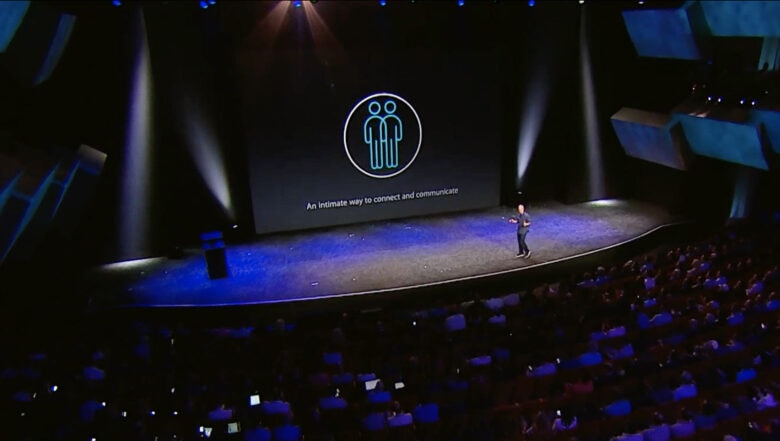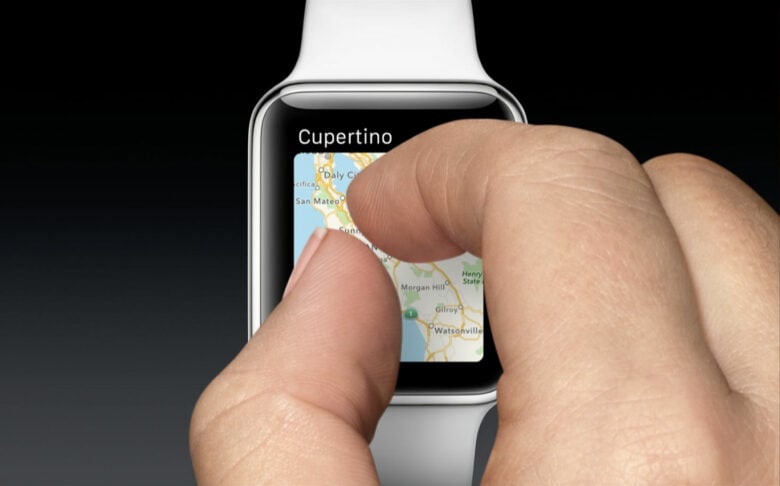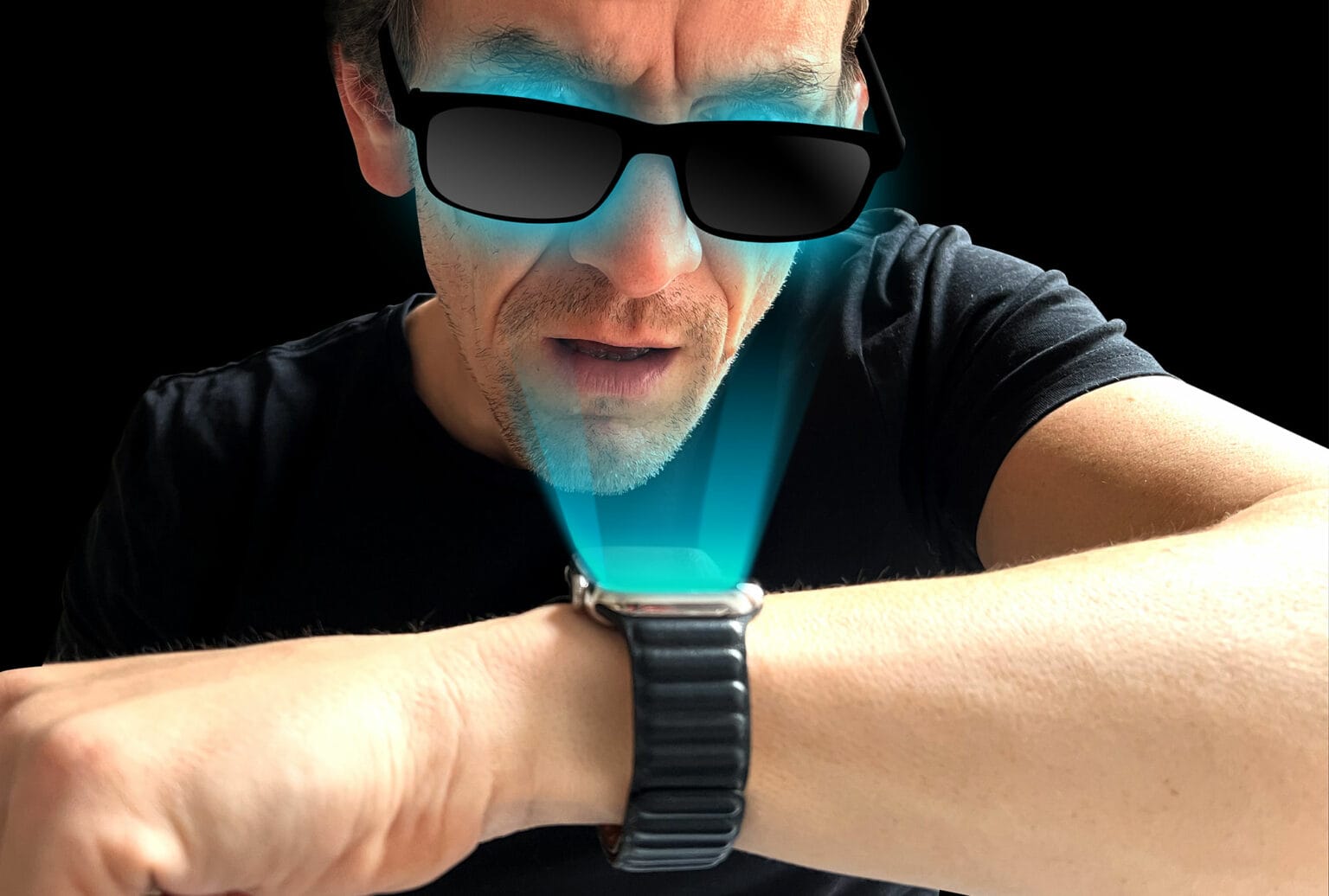Unveiled at a special event way back in 2014, the first Apple Watch looked similar to the wearable we know and love today. But looks can be deceiving. Take the Digital Crown and Side Button, for example. Their design may not have changed, but their functionality is now very different.
Apple Watch went through a radical evolution over the past eight years. What started out as an “intimate way to connect and communicate,” has become primarily a health and fitness device.
This pivot is uncharacteristic of Apple. Products like iPod, iPhone and iPad launched with a clear vision and remained true to it. The Apple Watch’s evolution suggests a shift in Cupertino’s approach to new products, and provides tantalizing clues to the future of the company’s rumored next platform launch: realityOS.
Steve Jobs gave products focus
When Apple co-founder Steve Jobs first announced the iPod, the device’s purpose was clear: 1,000 songs in your pocket. The number of songs increased over the years, but iPod remained true to its original mission.
Similarly, when Jobs introduced iPhone, he pitched it as three devices in one: a widescreen iPod, a revolutionary mobile phone and an internet communicator. This description essentially rings true today, with the notable addition of a good camera.
Jobs had a knack for seeing the potential for new products long before consumers even knew they wanted them. And he distilled his vision into single-minded, memorable mission statements.
While researching this story, I didn’t need to look up Jobs’ pitches for iPod and iPhone. I still clearly remembered them, all these years later. But for Apple Watch, I had to dig out footage of the product launch, to remind myself exactly what Apple CEO Tim Cook had said.
The focus for Apple Watch was all wrong

Photo: Apple
In an echo of Jobs’ iPhone launch, Cook positioned Apple Watch as three things in one:
- A precise, customizable timepiece
- An intimate way to connect and communicate
- A health and fitness companion
The first goes without saying — of course Apple Watch is a reliable timepiece. The second, “an intimate way to connect,” sounds very odd indeed. Intimate in what way, exactly?
Cook spent most of the keynote trying to explain this. He demonstrated how you could send your heartbeat to a love interest, tap a friend’s wrist remotely or invite a colleague to sushi lunch by drawing a tiny fish with your stubby finger. All these and more eccentric features were rolled into something called Digital Touch. Bizarrely, Apple thought Digital Touch was so important, the Side Button was originally dedicated to launching it.
The third and final item on the list was health and fitness. Cook had buried the lede. Health and fitness went on to become the heart and soul of the product.
Apple Watch was a hit, but not for the reasons Cupertino expected
Digital Touch proved to be a dud, but Apple Watch users around the world got hooked on closing their rings. For the launch of Series 2, Apple’s marketing pivoted toward health and fitness. And with subsequent updates, that focus only increased.
If Apple Watch were launched today, Cook’s presentation would probably look more like this:
- A health and fitness companion
- A way to check notifications and perform quick tasks without using your iPhone
- A customizable watch
9 Apple Watch miscues and adjustments
Like a football coach in the locker room at halftime, Cook & Co. identified their initial Apple Watch miscues and swiftly made the necessary adjustments to win the game. Here are nine key miscues and how Cook’s team addressed them.
1. Digital Touch
- Miscue: The side button triggered Digital Touch, a whimsical feature almost no one used.
- Adjustment: Digital Touch was scrapped, although the ability to send scribbled drawings lives on, buried in the Messages app. The Side Button now triggers the Dock, for switching quickly between apps without having to bother with the Apple Watch’s Home Screen (see next point).
2. Home Screen
- Miscue: Pressing the Apple Watch’s Digital Crown took you to the Home Screen for launching apps. But third-party watch apps never took off, and the watch face always felt more like the Home Screen.
- Adjustment: Pressing the Digital Crown now takes you to the watch face (unless you’re already there, in which case it still triggers the Home Screen). These days, Apple focuses more on promoting watch faces and Complications rather than apps.
3. Glances
- Miscue: Swiping up on the Apple Watch face revealed a row of mini-apps called Glances. But watch apps were already mini iPhone apps. Mini versions of mini apps didn’t make sense.
- Adjustment: Apple scrapped Glances. Swiping up now on the Apple Watch screen reveals Control Center, providing quick access to things you might actually need to do with your watch, like enable silent mode.
4. Zooming
- Miscue: In the Apple Watch launch video, design chief Jony Ive crooned that the Digital Crown was designed for zooming. His rationale was that the watch’s screen was too small for the pinch-to-zoom gesture used on iPhone. Turning the Digital Crown was his solution. But Apple Watch apps display bite-size information at a glance. There’s not much call for zooming.
- Adjustment: Today, the Digital Crown is just used for scrolling and picking items. Apple’s Human Interface Guidelines doesn’t even mention using it for zooming anymore. But one strange artifact remains: On the Home Screen, you can still use the Digital Crown to zoom into an app.
5. Force Touch
- Miscue: Up until Series 5, Apple Watch supported Force Touch to trigger context menus. This neat solution addressed the shortage of screen space for apps with lots of options. But complex watch apps never took off, and the menus proved hard to discover.
- Adjustment: Hardware support was scrapped in Series 6. Software support was scrapped in watchOS 7. Apple introduced a simpler, more discoverable side-swipe gesture instead, to reveal additional controls in apps like Workout.
6. Time Travel
- Miscue: Previewed when Apple Watch launched, but not introduced until watchOS 2, Time Travel enabled you to scroll the Digital Crown to move the watch face and its complications forward in time. But beyond checking what the weather would be like in the future, there didn’t seem much point to it.
- Adjustment: Time Travel was quietly retired in watchOS 5.
7. GPS
- Miscue: GPS was a standard feature in most sports watches in 2014. The fact that Apple Watch didn’t have it was a serious omission. Even when it was added with Series 2, route mapping was still far less accurate than with rivals like Garmin’s smartwatches. That might be acceptable for casual fitness users, but as health and fitness became the primary purpose of Apple Watch, it just didn’t cut it.
- Adjustment: Over the years, Apple refined its GPS route-mapping to the point where today it’s almost as good as rivals.
8. Speed
- Miscue: The original Apple Watch was sloooooooow. The user interface often froze, and even simple tasks were fiddly and time-consuming to perform.
- Adjustment: The sluggish, 520 MHz single-core S1 chip used in the original Apple Watch has evolved into the far snappier dual-core 1.8GHz S7 chip used in today’s Apple Watch. And improvements to the user interface design of built-in apps enable you to perform common tasks with a single tap.
9. Price
- Miscue: Steel was the standard finish of the original Apple Watch. Cheaper aluminum cases were reserved for Sport models. Apple even offered preposterously priced solid gold Edition models, which were bought by no one.
- Adjustment: With Series 2, the cheaper aluminum finish became standard and gold was scrapped altogether.
A clear picture emerges from all these miscues and adjustments. What started out as a luxury item for running a wide range of complex apps became an everyday device for performing a small number of quick and convenient functions.
Unlike major product launches of the Steve Jobs era, Cook & Co. didn’t nail it first time with Apple Watch. But thanks to that failure, Apple learned how to make swift midgame adjustments. As a result, Apple Watch sales eventually exceeded iPod’s. And Apple’s newfound adaptability could prove invaluable for what comes next.
Apple learned to RERO

Photo: Apple
The ability to learn from mistakes and adapt is highly prized in Silicon Valley, where VCs encourage startups to “release early, release often.” The theory is that it’s better to ship a product sooner and learn from the feedback of real customers.
Steve Jobs usually took the opposite approach. He liked to quote Henry Ford, who (allegedly) once said: “If I had asked people what they wanted, they would have said faster horses.” In other words, Jobs (like Ford) thought customers didn’t know what they wanted until he showed them.
Jobs secretly worked on products for years, and only revealed them to the public when he believed they were perfect.
That’s all very well if you’re a one-of-a-kind product visionary, like Jobs. But for the rest of us, including Apple in the post-Steve Jobs era, learning from customers makes a lot of sense. And whether deliberately or by accident, that’s exactly what Cook & Co. did with Apple Watch. They launched a product that wasn’t quite right — and then figured out from customers what it was actually for.
Let’s get real about realityOS
Lessons learned from Apple Watch will inevitably inform Cupertino’s next major platform launch. Leaks suggest Apple is working on realityOS, a new spatial computing platform that leverages the power of Apple’s ARKit technology. The first product based on realityOS is rumored to be a mixed-reality headset retailing at an eye-watering $3,000.
At that price, it’s hard to see many people buying it. Especially when it’s not clear exactly what the device is for. It certainly doesn’t sound like an iPhone- or iPad-style smash hit. But maybe it’s not supposed to be.
Maybe Tim Cook learned from Apple Watch and is trying a new approach. Maybe he suspects there’s something in this whole augmented reality thing, but he’s not sure exactly what. And by releasing early and releasing often, he hopes to find out.
At $3,000, the first iteration of realityOS wouldn’t be a mass-market product. But it would be purchased by AR enthusiasts and rich Apple fans. The feedback from these early adopters, combined with hardware learnings from shipping early, could prove invaluable.
Like Apple Watch, by the time the tech comes down to a consumer-friendly price, the product may have found its true purpose. It’s very different from Steve Jobs’ approach to launching new products, but it might just work.


